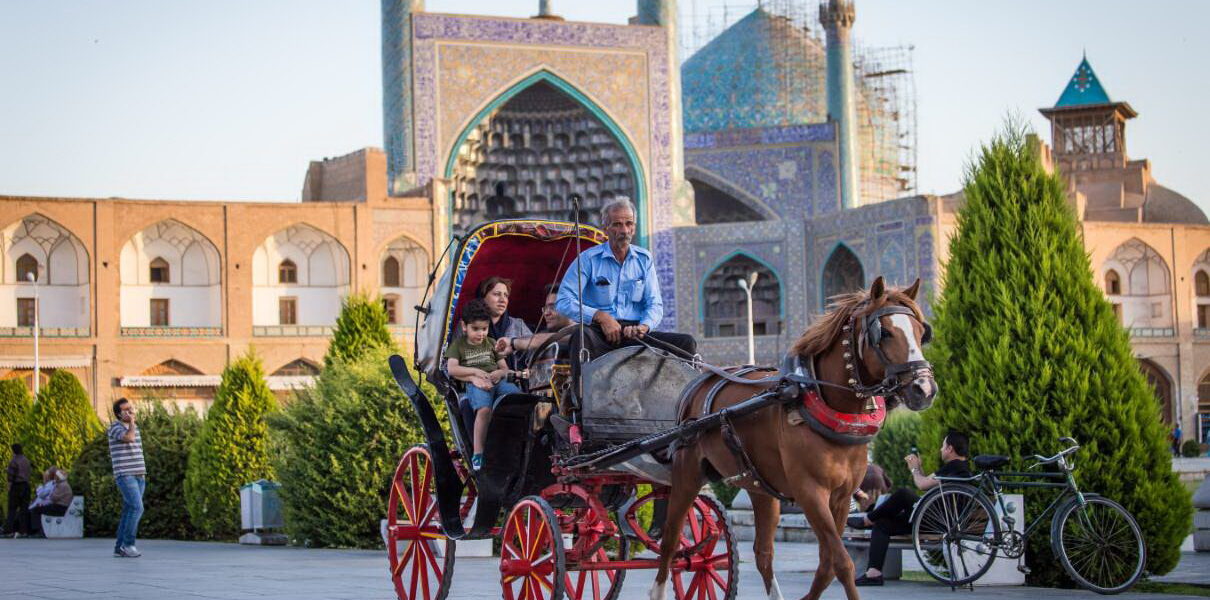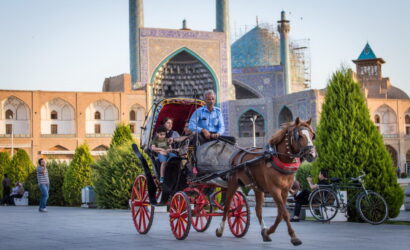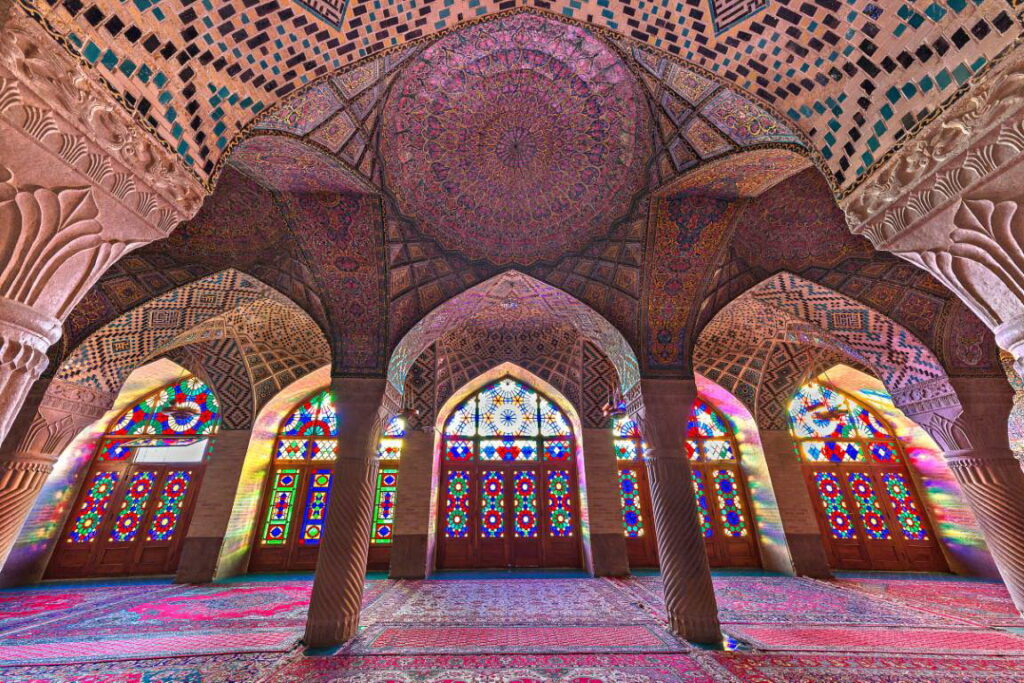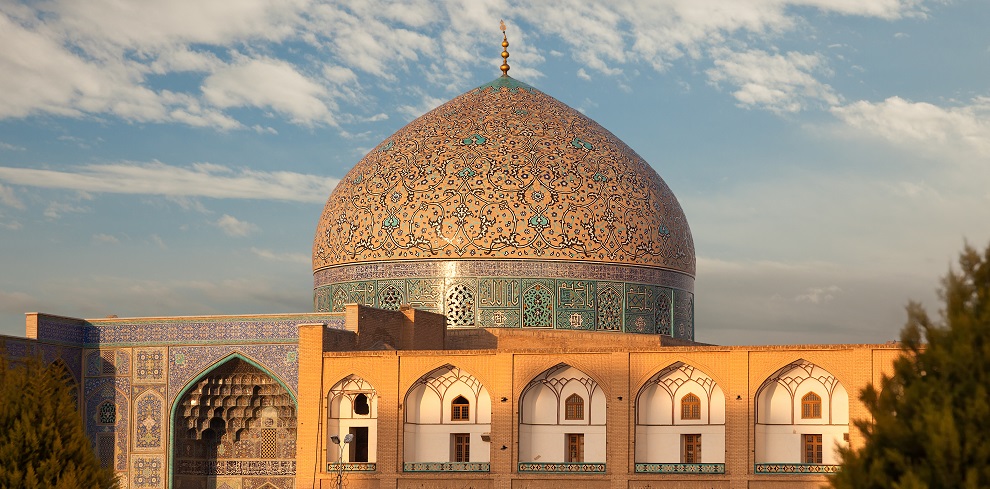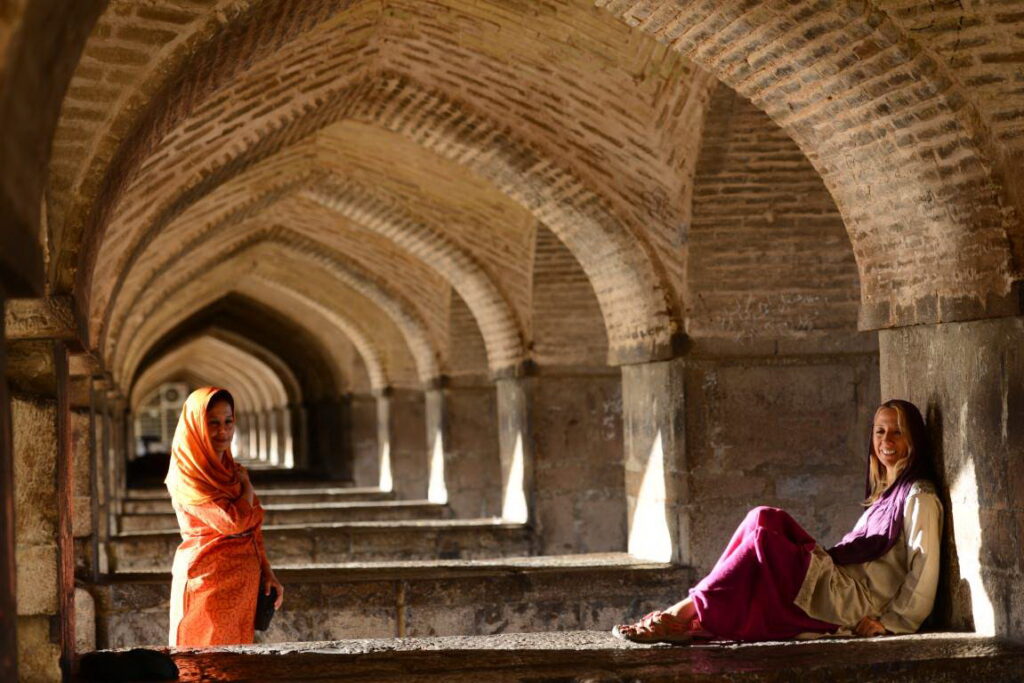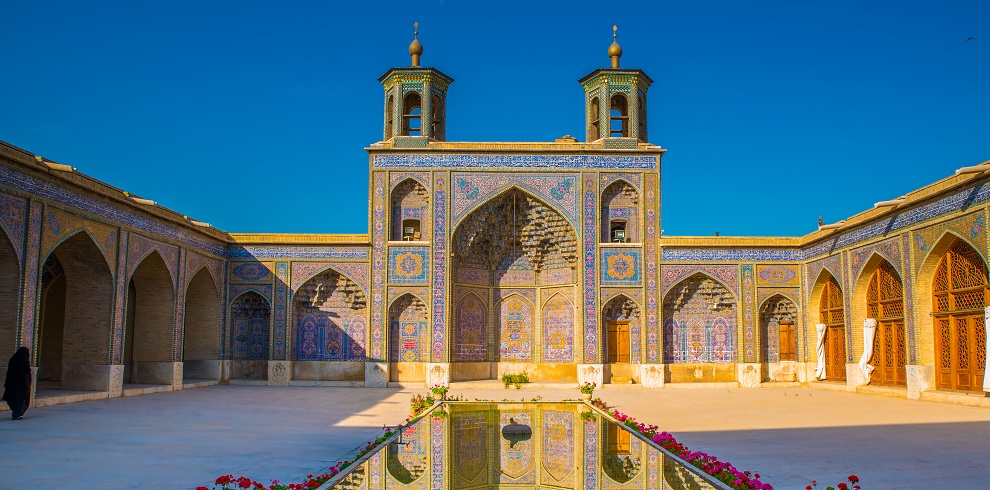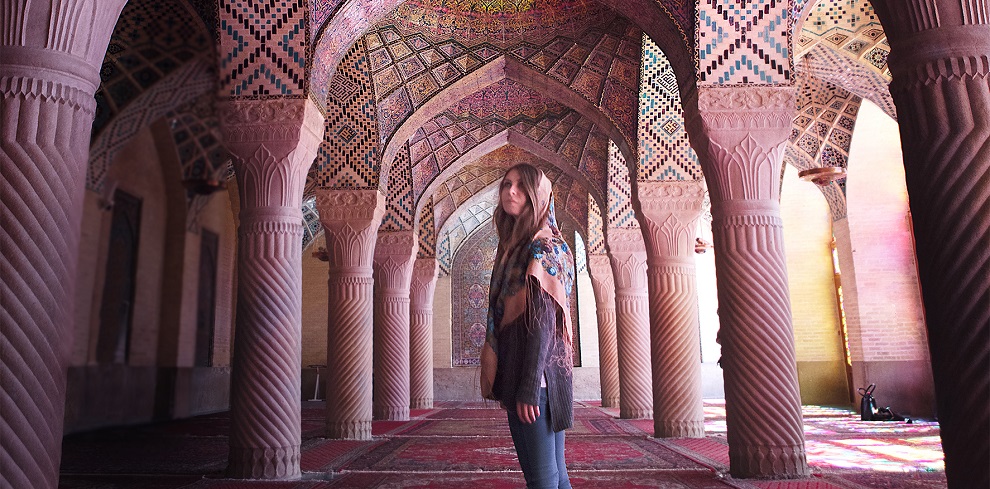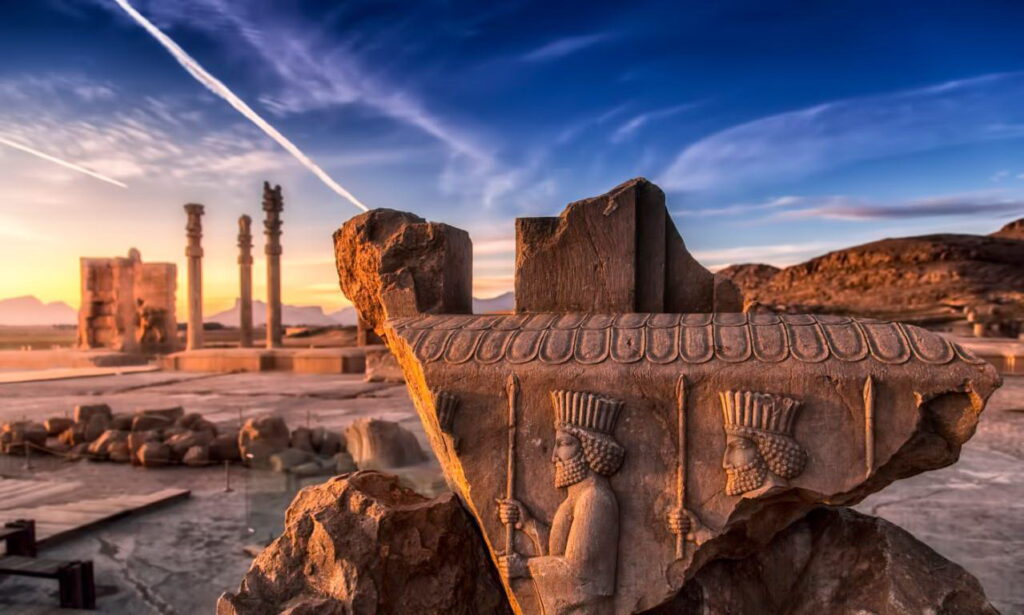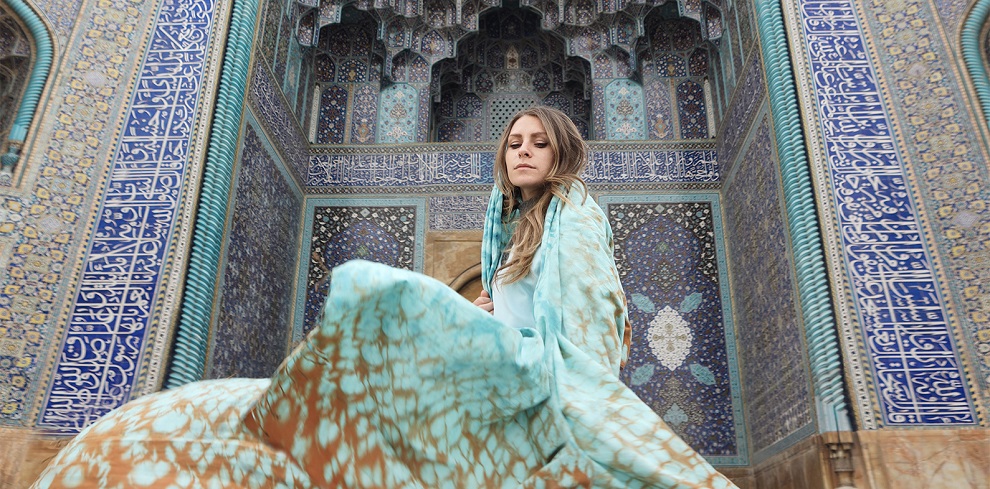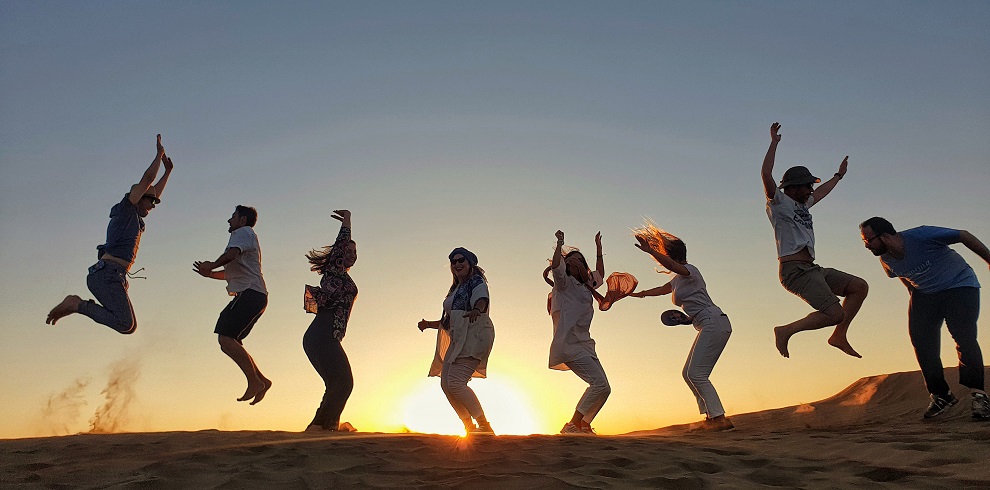-
Bus, Local Airlines
-
3 Stars Hotels
-
Tehran
-
Feb, Mar, Apr & May
-
Cluture, History
-
6 Breakfasts, 0 Lunches, 1 Dinner
-
English, Spanish, French, Chinese
-
Easy
-
2-8
-
12
-
65
Overview
Throughout the ages, Iran has thrived, showcasing its remarkable historical legacy. Majestic palaces, ancient fortresses, stunning mosques, and charming villages stand as testaments to the rich tapestry of cultures woven throughout its lands.
Embark on an enchanting journey where you’ll delve into Tehran’s historic quarters, marvel at the exquisite artistry of Isfahan, and be captivated by the poetic allure of Shiraz.
Highlights
- Discover various historical and culturally significant cities like Tehran, Shiraz, Isfahan, and Kashan
- Visit six remarkable UNESCO World Heritage Sites, including Golestan Palace, Persepolis, Pasargadae, Chehel Sotun Palace, Naghsh-e Jahan Square, and Fin Gareden
- Engage with local communities, with the chance to participate in a Persian Cooking Class hosted in a local home
- Indulge in the exquisite flavors of Persian Cuisine, Delectable Sweets and Dessert, and acquire genuine Iranian Souvenirs to cherish
Itinerary
After arriving at Imam Khomeini International Airport (IKA) in Tehran, our representative will meet and greet you at the airport. The local representative will transfer you to your hotel to rest.
This morning, we will take you to a World Heritage Site, the lavish Golestan Palace. Built during the Qajar Dynasty, which rose to power in the late 1700s, this fabulous walled complex is centered on a landscaped garden with tranquil pools. Many of the elements we’ll admire today, date to the 19th century when local Qajari architects and artisans were looking to integrate traditional Persian style with elements of Western and Russian origin. The palace buildings are among the oldest in modern Tehran and they are still regarded as a crowning achievement of the Qajar era.
Then, we will walk around the Tehran Grand Bazaar. The second largest grand bazaar in Iran after Tabriz.
In the afternoon, we will visit the National Museum of Iran, where we can see fabulous historical items from 5000 BC to the advent of Islam in Iran which shows a brief history of our land.
After breakfast, we will visit the Nasir-al-Mulk Mosque (Pink Mosque). Its interior reveals a magnificent masterpiece of design with stunning colors. This is a space where light and worship intertwine.
Then we will visit the Karim Khan Citadel from outside, which was built during the Zand Dynasty. We’ll have time to explore the Vakil Mosque and shop in the bustling Vakil Bazaar, home to hundreds of stores, beautiful courtyards, and even an ancient caravanserai (Saray-e Moshir). After that, we’ll visit the lovely garden Tomb of Hafez, one of our most outstanding poets to feel the taste of Persian Literature. Hafez is one of the great poets who impressed everyone with his mastery. His poems give us a special feeling and the peace in his tomb is outstanding.
We have a full day of driving today to reach our destination of Isfahan.
We will have some stops on our way to visit the legendary City of Persepolis (UNESCO World Heritage Site), the former capital of Darius the Great founded in 512 BC. There was no more impressive construction in the ancient world, except perhaps the Karnak in Egypt.
Later, we will journey to the Necropolis (Naghsh-e Rostam), to view the astonishing tombs of the four Achaemenid kings: Darius the Great, Xerxes, Artaxerxes, and Darius II. Carved into the sacred Mount Rahmat, these tombs are a sight to behold.
Then, we continue to Isfahan. En route we will have a short stop to visit the Pasargadae, (UNESCO World Heritage Site), the Tomb of Cyrus the Great, and the former capital of the Achaemenid Empire. We will spend some time exploring the site and though not as striking as Persepolis, there is a great viewpoint where we can look over the site and the surrounding area.
Our exploration starts in the Chehel Sotun Palace (UNESCO World Heritage Site). Set in a landscaped and forested park in front of a tranquil reflecting pool, this graceful pavilion was built by Shah Abbas II for entertainment and court receptions. Entering through a portico with twenty slender wooden columns, we’ll discover soaring halls embellished with frescoes, paintings, and mosaics; the Hall of Mirrors is especially breathtaking!
Next up is the UNESCO World Heritage Site, Naghsh-e Jahan Square (Royal Square). This 17th-century site is one of the largest public spaces in the world. Here in the square, we’ll visit the 17th-century Shah Mosque, revered as a masterpiece of Islamic architecture and easily recognized by its magnificent tile-work and soaring cupola and minarets. We will also visit Sheikh Lotfollah Mosque, also known as the Ladies Mosque, as it was built for the Shah’s harem, renowned for its brightly colored domed ceiling, where the light creates the image of a peacock. In the Ali Qapu Palace, we’ll marvel at its beautiful music rooms and the balconies where Safavid kings would sit to enjoy the polo matches unfolding in the square below. We’ll end our exploration of the square by visiting the Qeisarieh Bazaar. With hundreds of local vendors that specialize in traditional arts and crafts, it’s a wonderful place to shop for pottery, enamel, jewelry, and delicately inlaid board games.
Before leaving Isfahan behind, we have time to visit another beautiful historical bridge of Isfahan called the Khajoo Bridge. Afterward, we’ll travel to Kashan, a town originally famous for its Textiles, Rose Water and Ceramic production, but now better known for Fin Garden (UNESCO World Heritage Site).
Fin Garden is our first stop; a relaxing and visually impressive Persian garden with water channels all passing through a central pavilion. There is also the chance to buy some rose water, a local specialty, outside of the site. Then, we will visit Tabatabaei’s Traditional House. It was built about 130 years ago during the reign of the Qajar dynasty (1857) by the Iranian famous architects.
Continue our journey to Tehran.
Our representative will transfer you to Imam Khomeini International Airport (IKA) according to your flight time.
Cost
The Cost Includes
- Pick-up or Drop-off service from and to Airport(in our own vehicle)
- Transportation to and from!!
- Food all along the trip(Breakfast, Lunch, Dinner and a cup of coffee or tea) and accommodations during the trip in hotels with family environment
- Transportation, food, accommodation and insurance of Guide during the trip
- Down jacket, all-season sleeping bag, duffel bag and trekking map(in case if you don’t have your own. Down jacket, sleeping bag and duffel bag must be returned after completion of the trip)
- First Aid Medical Kit(Your guide will carry the Medical Kit but we also advise to bring yourself for your own use, as far as possible)
- All the required permits and paperwork
The Cost Excludes
- International Airfare
- Visa Charges
- Hotel Expenses(In Kathmandu, some packages do include hotel expenses)
- Your travel and medical insurance
- Personal Expenses such as shopping, bar bills, hot shower, telephone, laundry, titbits etc
- Food and accommodations in Kathmandu
- Services not mentioned or not promised by the agent/agency
- Emergency expenses such as expenses on chartered helicopter.
FAQs
Most travelers to Iran need a visa, which can typically be obtained through the Iranian consulate or embassy in their home country. The requirements may vary depending on nationality, but generally include a valid passport, completed visa application form, passport-sized photos, and sometimes proof of travel insurance.
Despite misconceptions, Iran is generally a safe destination for travelers. The country has a low crime rate, and its people are known for their hospitality towards visitors. However, like any destination, it’s essential to exercise common sense, respect local customs, and stay informed about any travel advisories.
The best time to visit Iran is during the spring (March to May) and fall (September to November) when the weather is mild, and attractions are less crowded. Summers can be hot, especially in central regions, while winters can bring cold temperatures and snow, particularly in the northern and mountainous areas.
Map

